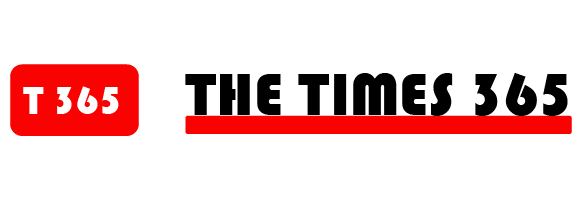The second triennial survey at El Museo del Barrio, “Flow States,” is loosely organized around the concept of diasporas and the movements of people across nations, geographies, and cultures. A major point the exhibit tries to make is that the current state of Latino art, which is the focus of these triennials, has been shaped by those movements, because Latino identities are inevitably the result of complex mixtures and interactions.
The show was assembled by a team of three: Rodrigo Moura, El Barrio’s chief curator; his colleague Susanna V. Temkin; and Maria Elena Ortíz, a guest curator from the Modern Art Museum of Fort Worth, Texas. They selected works from thirty-three artists based in the U.S., Latin America, the Caribbean, and—expanding the geographical reach beyond the Americas for the first time in a triennial—Europe. They included two Filipino artists because, in Temkin’s words, they are part of “a shared imperial history that left a mark on their names.” The Philippines went through both Spanish colonization and U.S. occupation, and its people are often mistaken for Latinos in this country owing to their Spanish-sounding names. The curators themselves only learned that one of the artists, the late Lance de los Reyes, was Filipino when they contacted his estate. Norberto Roldan, the other Filipino artist selected, presents a series of altar-like assemblages of abandoned objects, materials, and debris from a gentrifying neighborhood in Quezon City—which, to the curators, recall the syncretic altars often found in Latino households.
“We are never declaring or defining what Latinx art is,” Temkin told me. “On the contrary, we are showing the vast diversity of what artists of Latinx descent and beyond are creating today.” Despite the historical and cultural contributions of Latino communities, El Museo del Barrio is one of a handful of museums in the U.S.—including the Museum of Latin American Art, in Los Angeles—exclusively dedicated to preserving, collecting, and exhibiting Latino art. (Efforts to fill the gap have led to legislation to create a Smithsonian National Museum of the American Latino.) And, according to Patrick Charpenel, El Museo’s executive director, just a small number of other major museums have made serious efforts to incorporate Latino art, including the Los Angeles County Museum of Art; the Pérez, in Miami; and the Whitney, in New York, among others. At the same time, he said, El Museo remains “rooted in the local community, with a focus on social justice.” During a panel with the curators on the opening night of the exhibition, the moderator, Marina Reyes Franco, a curator at the Museo de Arte Contemporáneo de Puerto Rico, summed it up more precisely: “There is just no other place like this, that has a story like this, that can put on a show like this.”
El Museo was founded in 1969 as an art and educational center for the East Harlem Puerto Rican diaspora. The people of El Barrio, as the neighborhood was (and still is) known, had long suffered from neglect from the city government. In response, the local chapter of the Young Lords, a group of Puerto Rican social-justice activists, led a series of high-profile actions, such as a weeks-long campaign of burning garbage in the streets to protest the lack of sanitation services. As part of those efforts, a group of families, artists, and activists demanded that the neighborhood’s schools teach the history and culture of the Puerto Rican people, who made up the majority of its population. The city eventually appointed Raphael Montañez Ortiz, an artist and community activist, to create a new curriculum. Instead, as he wrote in a 1971 essay, he chose to create a museum “to afford me and others the opportunity to establish living connections with our own culture.” It opened in a public-school classroom and was intended to be a community museum that would exhibit work by Puerto Rican artists and offer educational programs.
“Ninety-five per cent of museums are born of capital accumulation or state will,” Rodrigo Moura told me. “Instead, this museum was born out of the determination of the Puerto Rican people in this neighborhood. It is probably one of the most important legacies of that historical moment.” Initially funded by the city, it became a nonprofit in 1971, and exhibited works by Puerto Rican artists almost exclusively until 1977, when its fourth director, the Nuyorican poet Jack Agüeros, opened it up to other Latin American artists living and working in the city. In 1999, the museum launched its first biennial, called “The (S) Files” (“S” for “selected”), showcasing the work of Puerto Rican, Caribbean, Latino, and Latin American artists working in the New York area.
In the late nineteen-nineties and early two-thousands, the neighborhood’s demographics began to change to include more Mexicans and Dominicans, and the museum’s board of directors and administration also shifted away from a predominantly Puerto Rican composition. After a series of crises, including financial mismanagement (as a nonprofit, the museum is funded by government grants, philanthropic donations, and corporate sponsorships) and a void in leadership that led to staff departures, the museum decided to expand its purview to include Latin American artists with no connections to New York City’s Latino communities. In 2002, the museum’s first non-Puerto Rican executive director, Julián Zugazagoitia, who was born in Mexico, put on a show of works by Frida Kahlo and Diego Rivera. It attracted a record number of visitors but also accusations of Latin American élitism—the argument being that artists based in Latin America often benefit from more resources and attention from cultural institutions in the U.S. than Latino artists do.
In 2017, Charpenel, who is also Mexican, became the executive director. Two years later, at an exhibit celebrating the museum’s fiftieth anniversary, a group of artists and academics protested what they saw as a case of institutional gentrification: people from outside the community had co-opted the museum. Montañez Ortiz dismissed the criticism as “agoraphobic ethnocentricity” that ignored the broad experiences and connections of the Latino people. If the museum wanted to remain relevant and succeed, it had to expand.
Considering that New York City has the largest Latino population of any city in the country—almost two and a half million people in a population of 8.8 million—El Museo’s quarters remain modest. After making several moves, it found a permanent home, in 1977, in the Heckscher Building, a city-owned former orphanage turned public school, on Fifth Avenue and East 104th Street, across from the Central Park Conservatory Garden. (El Museo currently shares the building with the New York City Department of Parks and Recreation, a high school, and a music school.) It occupies ten thousand square feet of gallery space on the first floor, but that is woefully insufficient, Charpenel said. The museum also has a café, a theatre that seats more than five hundred people, and office space spread throughout the building.
But there’s not enough room to have permanent exhibits from the eighty-five hundred works in the collection—it spans eight hundred years, starting with art from the Taíno people, the original inhabitants of Puerto Rico—and the museum is forced to close when a major show is being mounted. (It was closed for six weeks prior to “Flow States.”) Charpenel is working with the city to obtain more gallery space. He told me, “Latinx cultural institutions need to be large institutions that project the complexity of the Latinx experience.”






